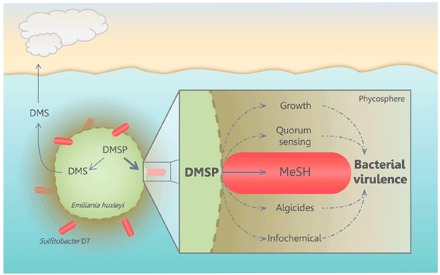Fig. 6. Conceptual model of the possible routes in which algal DMSP promotes bacterial virulence in E. huxleyi phycosphere.

During interaction, Sulfitobacter D7 consumes E. huxleyi–derived DMSP and transforms it into MeSH, which facilitates bacterial growth. DMSP and its metabolic products can promote production of QS molecules (19) and bacterial algicides (37), which were proposed to be involved in bacterial virulence. Furthermore, DMSP may facilitate bacterial chemoattraction to algal cells (20, 21). The algicidal effect of Sulfitobacter and other members of the Roseobacter clade [e.g., P. inhibens (15)] may have a broader-scale impact on the dynamics of E. huxleyi blooms. These blooms are an important source for DMSP and its cleavage product DMS, which is emitted to the atmosphere. By consuming large amounts of DMSP, bacteria may reduce DMS production by the algal DMSP-lyase (Alma1). Accordingly, we propose that the balance between competing DMSP catabolic pathways, driven by microbial interactions, may regulate oceanic sulfur cycling and feedback to the atmosphere.
